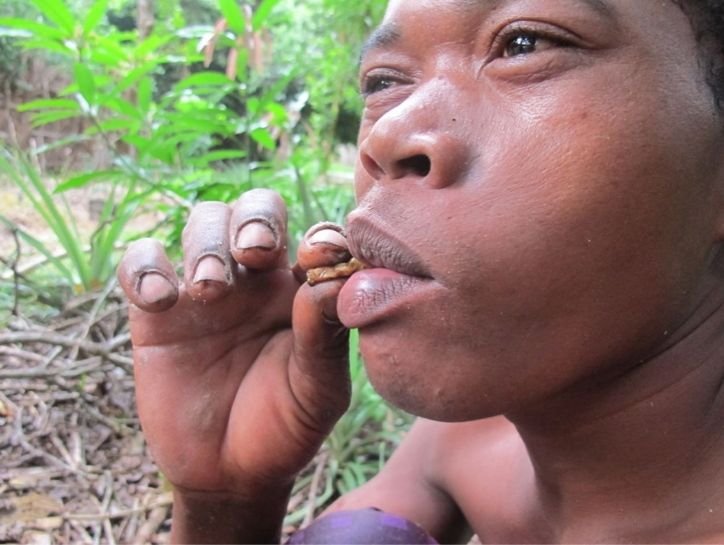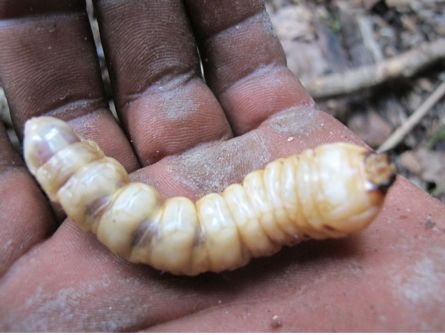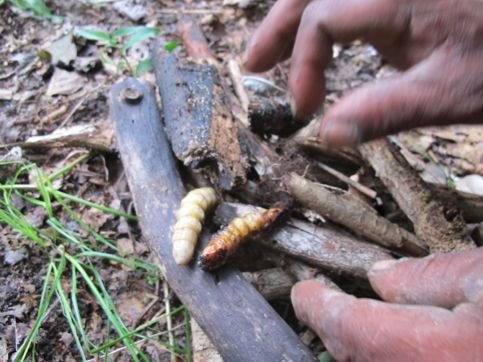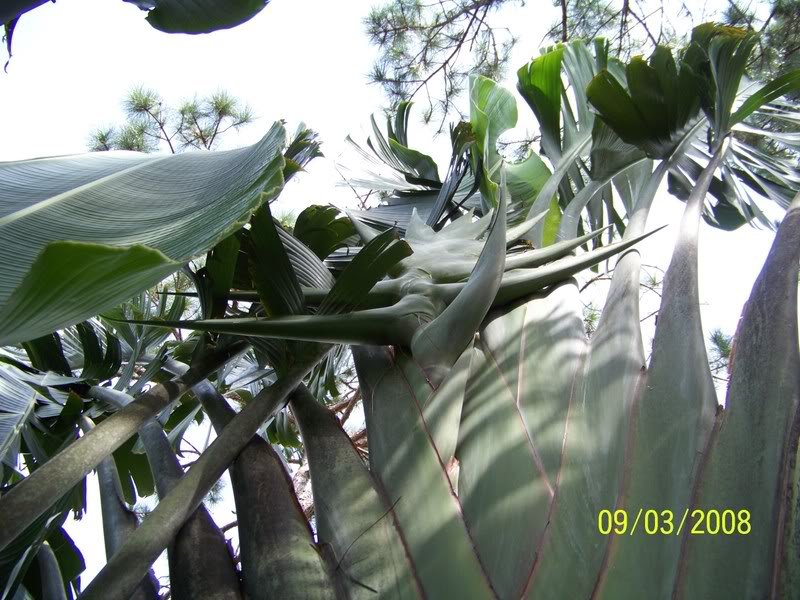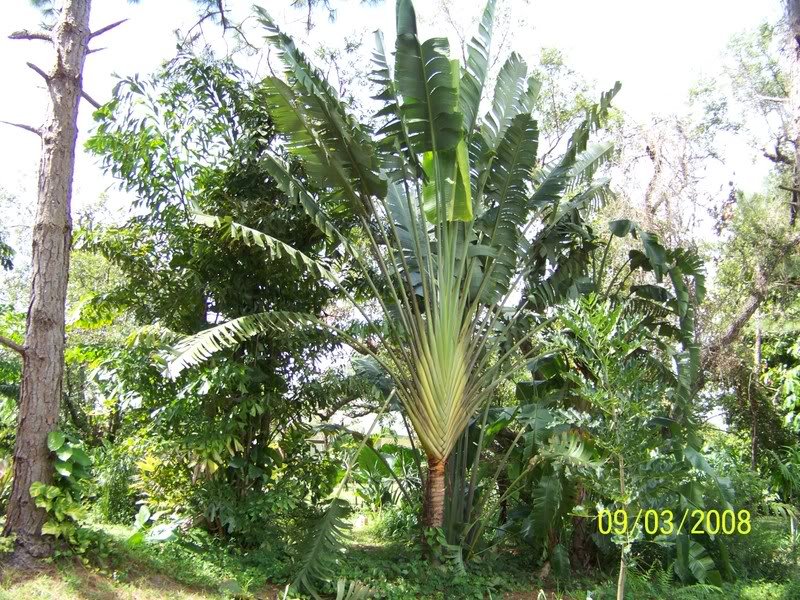By Donald Quinn-Jacobs and C.L. Craig | SEPALI/CPALI team
After finding beetle larvae under a piece of dead wood that he consumed, Bertrand began searching for more insects to sample. He found another species of Coleoptera larvae that Mamy identified as Oryctes (rhinoceros beetle) inside the "trunk" of a Ravanala tree. To collect the larvae, he had to cut down the tree. This is not a good way to preserve the Ravanala trees. So SEPALI will initiate research on growing the trees to feed the larvae without having to destroy the trees. SEPALI's demonstration site is a perfect spot to raise potential host plants and then to “ask” the grubs to "taste-test" them. A range of acceptable host plants can then be compared and those that produce the healthiest grubs will be gardened. This is the same approach the SEPALI team uses to identify caterpillar host plants.
Ravanala madagascariensis (Traveller's "Palm") is an iconic species for Madagascar gracing many postcards, paintings and even currency. It is not a true palm but actually a bird of paradise from the plant family Strelitziaceae.
"It has been given the name "traveller's palm" because the sheaths of the stems hold rainwater, which supposedly could be used as an emergency drinking supply for needy travellers. However, the water inside the plant is murky, black and smelly and should not be consumed without purification. Another plausible reason for its name is that the fan tends to grow in a north-south line, providing a crude compass." (Fresh from Wikipedia)
The beetle grub, characteristic of beetle larvae from the family Dynastinae, are among the largest beetles. Some adults reach over 6 inches in length. These wonderful animals can live as adults up to 2-3 years. The larvae feed on rotting wood and can take several years to reach adulthood. We can't wait to learn more about raising them on the beautiful Bird of Paradise!
Bertrand has devised 2 "recipes" for GG readers.
The recipes:
1- Add salt on the larvae and roast it for 5 minutes using firewood. The grub is ready to eat.
2- Try snacking on an uncooked larvae “au natural”. The larvae are delicious and crisp as is.
In the picture, there are one-roasted larvae and one uncooked larvae. So both larvae are ready to eat.
Enjoy!!!
Links:
Project reports on GlobalGiving are posted directly to globalgiving.org by Project Leaders as they are completed, generally every 3-4 months. To protect the integrity of these documents, GlobalGiving does not alter them; therefore you may find some language or formatting issues.
If you donate to this project or have donated to this project, you can receive an email when this project posts a report. You can also subscribe for reports without donating.
